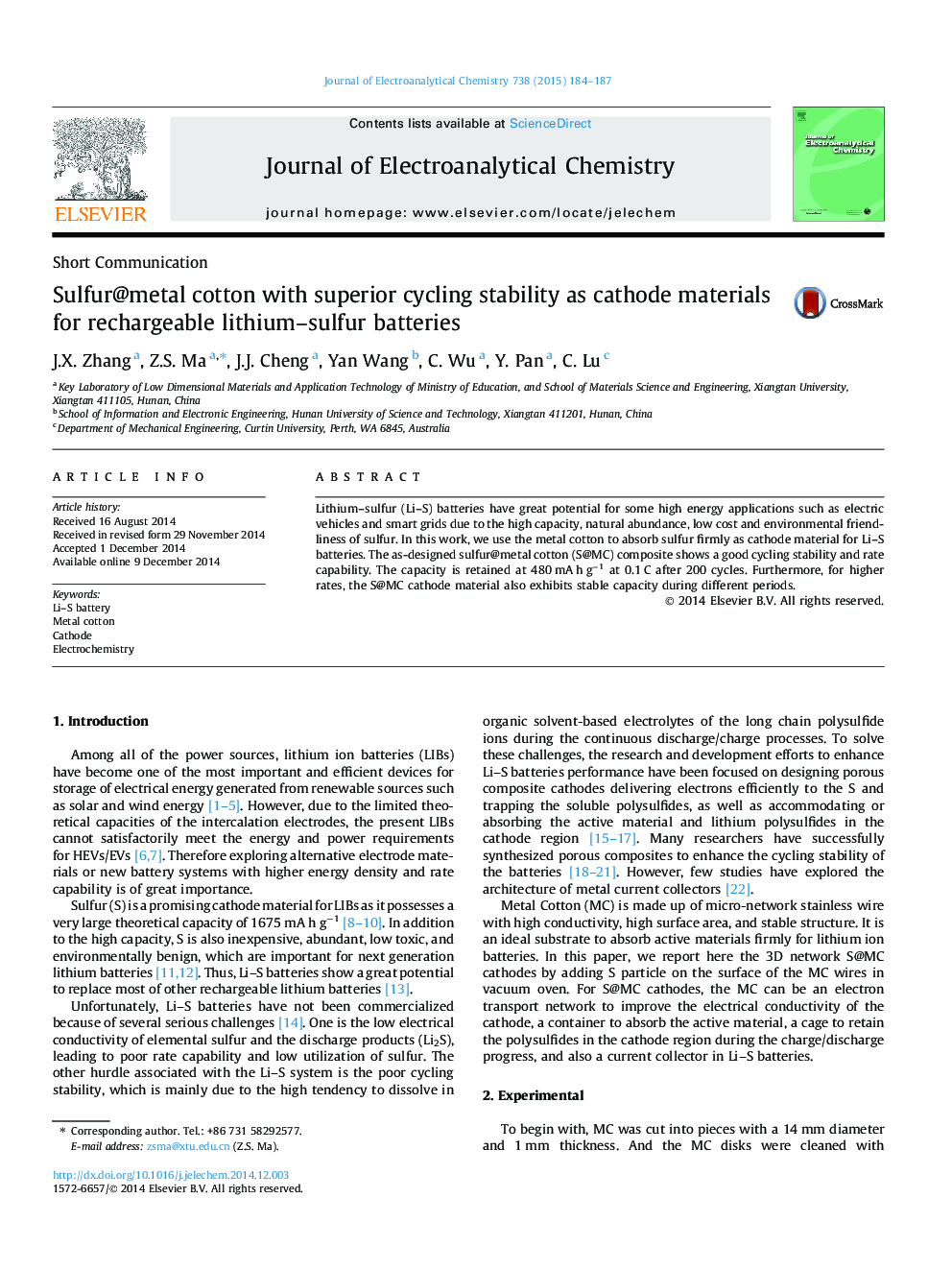| کد مقاله | کد نشریه | سال انتشار | مقاله انگلیسی | نسخه تمام متن |
|---|---|---|---|---|
| 218587 | 463207 | 2015 | 4 صفحه PDF | دانلود رایگان |

• Sulfur@metal cotton (S@MC) composite as cathode material for Li–S batteries.
• High rate ability of 160 mA h g−1 at 5 C.
• Excellent cycle ability with capacity of 480 mA h g−1 retention after 200 cycles.
Lithium–sulfur (Li–S) batteries have great potential for some high energy applications such as electric vehicles and smart grids due to the high capacity, natural abundance, low cost and environmental friendliness of sulfur. In this work, we use the metal cotton to absorb sulfur firmly as cathode material for Li–S batteries. The as-designed sulfur@metal cotton (S@MC) composite shows a good cycling stability and rate capability. The capacity is retained at 480 mA h g−1 at 0.1 C after 200 cycles. Furthermore, for higher rates, the S@MC cathode material also exhibits stable capacity during different periods.
We report here the 3D network S@MC cathodes by adding S particle on the surface of the MC wires in vacuum oven. For S@MC cathodes, the MC can be an electron transport network to improve the electrical conductivity of the cathode, a container to absorb the active material, a cage to retain the polysulfides in the cathode region during the charge/discharge progress, and also a current collector in Li–S batteries. We find that Li–S batteries employing S@MC cathodes exhibit superior cycle stability and excellent capacity retention. Schematic representation of the fabrication of the S@MC cathode.Figure optionsDownload as PowerPoint slide
Journal: Journal of Electroanalytical Chemistry - Volume 738, 1 February 2015, Pages 184–187